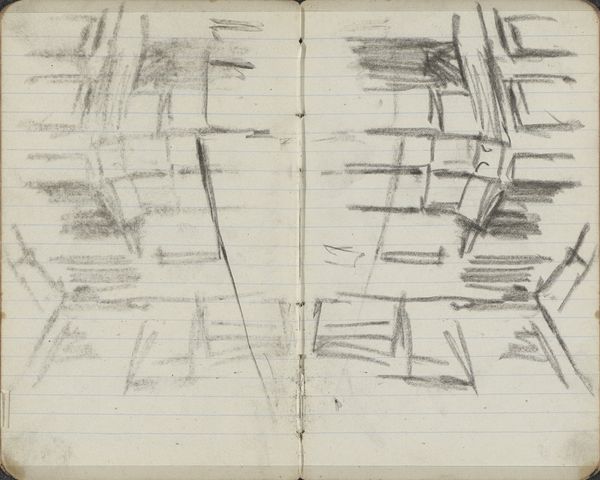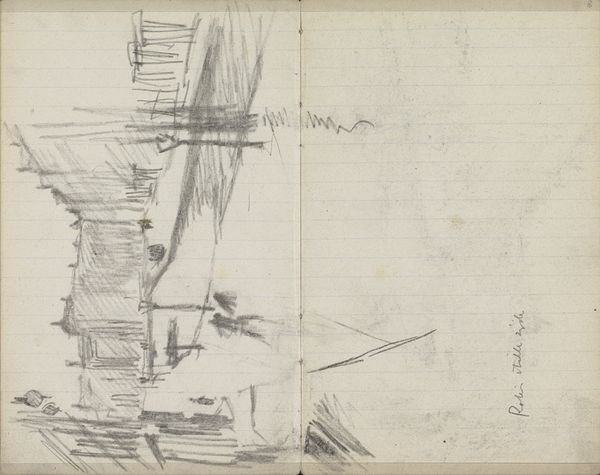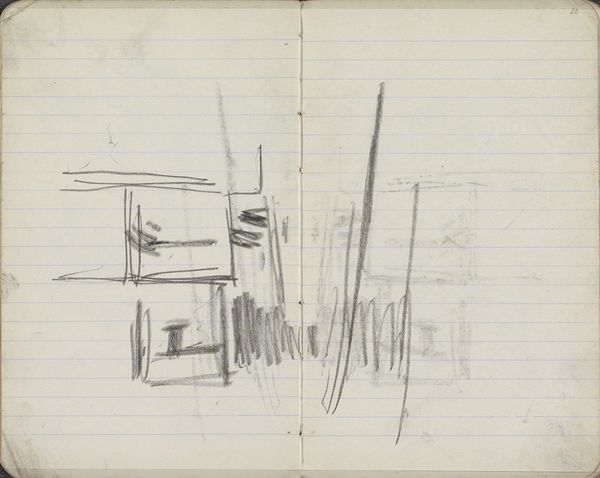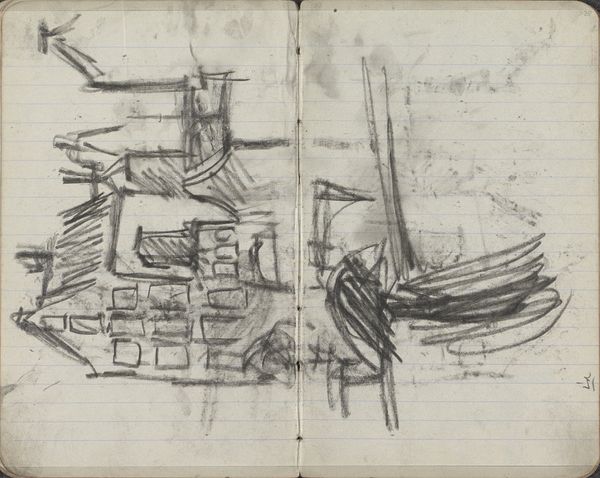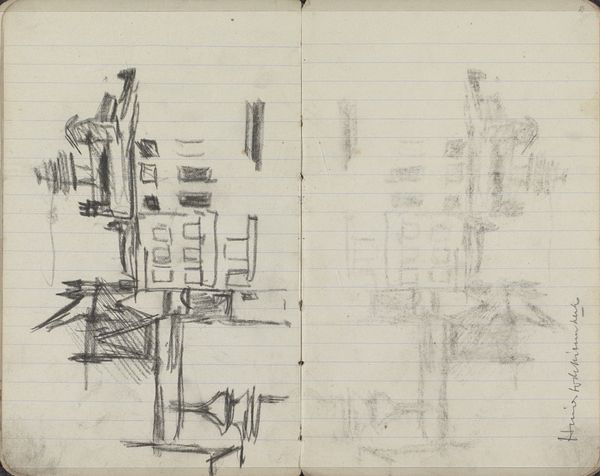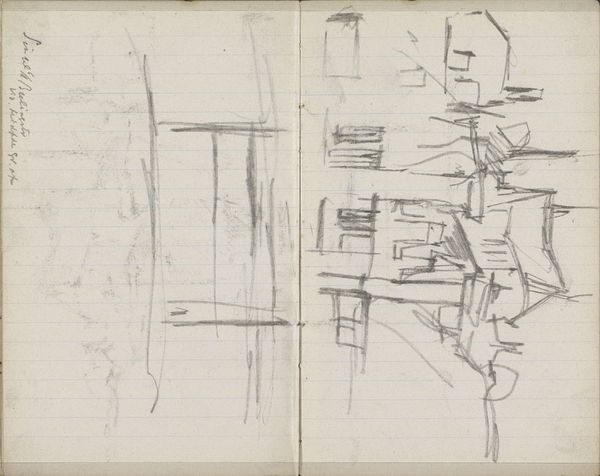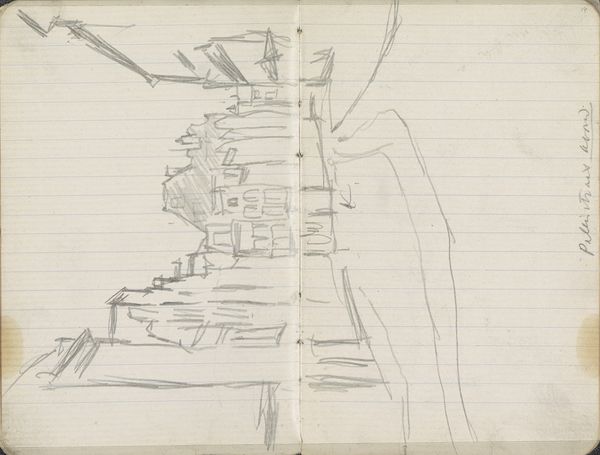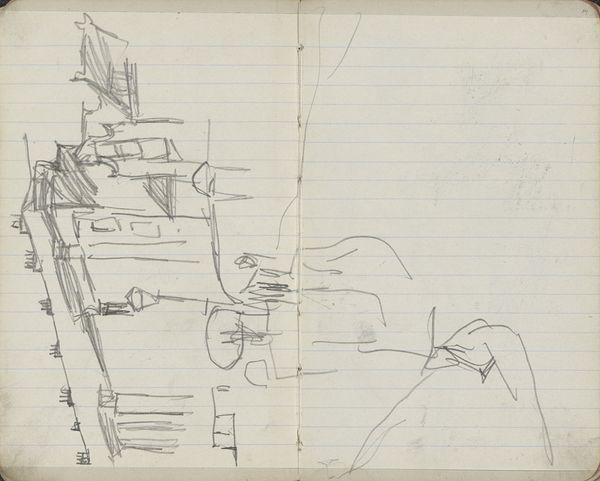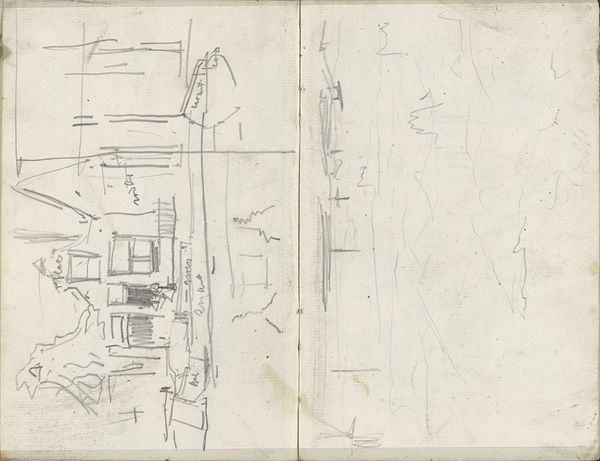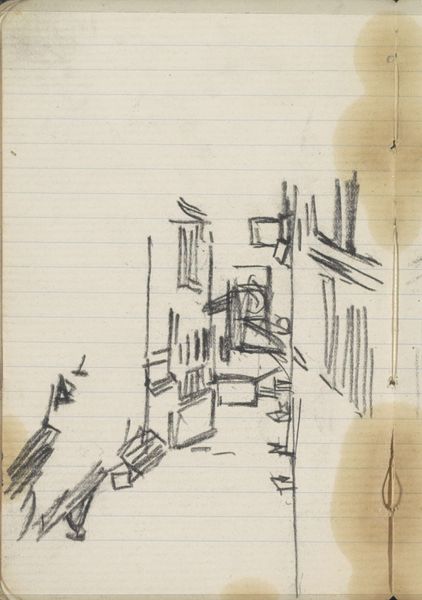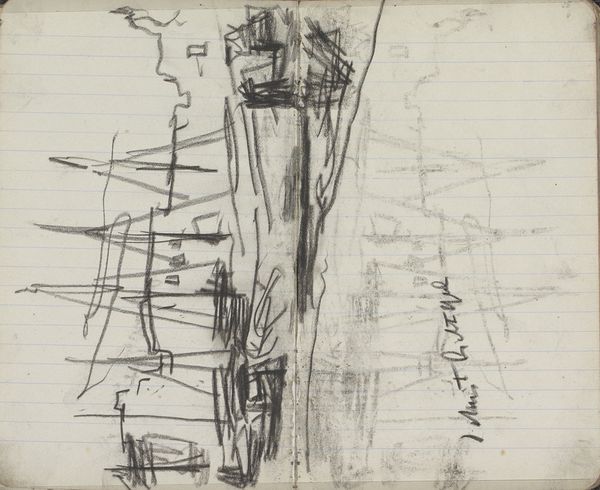
Nieuwe Kerk bij maanlicht, gezien vanaf de Nieuwezijds Voorburgwal c. 1894
0:00
0:00
georgehendrikbreitner
Rijksmuseum
Copyright: Rijks Museum: Open Domain
Curator: I find myself drawn to the sketch quality. George Hendrik Breitner created "Nieuwe Kerk bij maanlicht, gezien vanaf de Nieuwezijds Voorburgwal"—or, "New Church in Moonlight, Seen from the Nieuwezijds Voorburgwal"—around 1894, using graphite on paper. Editor: Immediately, a sense of melancholy washes over me. The graphite feels hurried, transient, like a fleeting memory caught in the act of disappearing. Is that streetlight I see being cut by sharp angles in the dark of night? It feels almost ghostly. Curator: That sense of transience is crucial. Breitner was known for capturing the dynamism of Amsterdam street life. The medium reflects the immediate capturing of sensory data and impressions and then how these experiences are turned into memory through symbol. It echoes his broader project of documenting the city's evolving identity during a time of intense industrial and social change. Editor: Precisely! The location becomes a symbol. I'm curious, how did class divisions influence how public spaces were experienced and represented in art? Curator: During Breitner's time, the Nieuwezijds Voorburgwal would have been experiencing this transformation, and, for many, these spaces represented conflict between a wealthy minority and working-class populations fighting for resources. He does not give much detail to the humans walking by. It is difficult to get a sense of social dynamics between classes at all in fact. We are left with architectural structures and a faint symbolic reference to moonlight, which lends an archetypal and mythic atmosphere to the sketch. Editor: And what did it mean to document these urban spaces from the perspective of a privileged individual, such as an artist? By quickly capturing it with pencil onto lined paper, what statements about society does it echo to later viewers? Is this social statement made on purpose by Breitner or simply an unintentional sign of his culture? Curator: I think Breitner sought to chronicle rather than critique, focusing on capturing the sensations of the city, the way light fell on buildings, and the fleeting moments of everyday life, without overtly engaging in direct social commentary. Perhaps what you're noticing echoes his time, culture and access that were unavailable to all social groups? Editor: That reading resonates strongly with the material constraints present in the drawing. His unique perspective, though incomplete, does show something. Curator: Indeed. It reminds us of the importance of seeking multiple perspectives and of understanding art within the contexts of history and symbolic language. Editor: Agreed, it's an excellent reminder that art is never truly neutral, especially during the Industrial revolution in Europe, with all its attendant consequences and symbolism for class, race, and human futures.
Comments
No comments
Be the first to comment and join the conversation on the ultimate creative platform.
